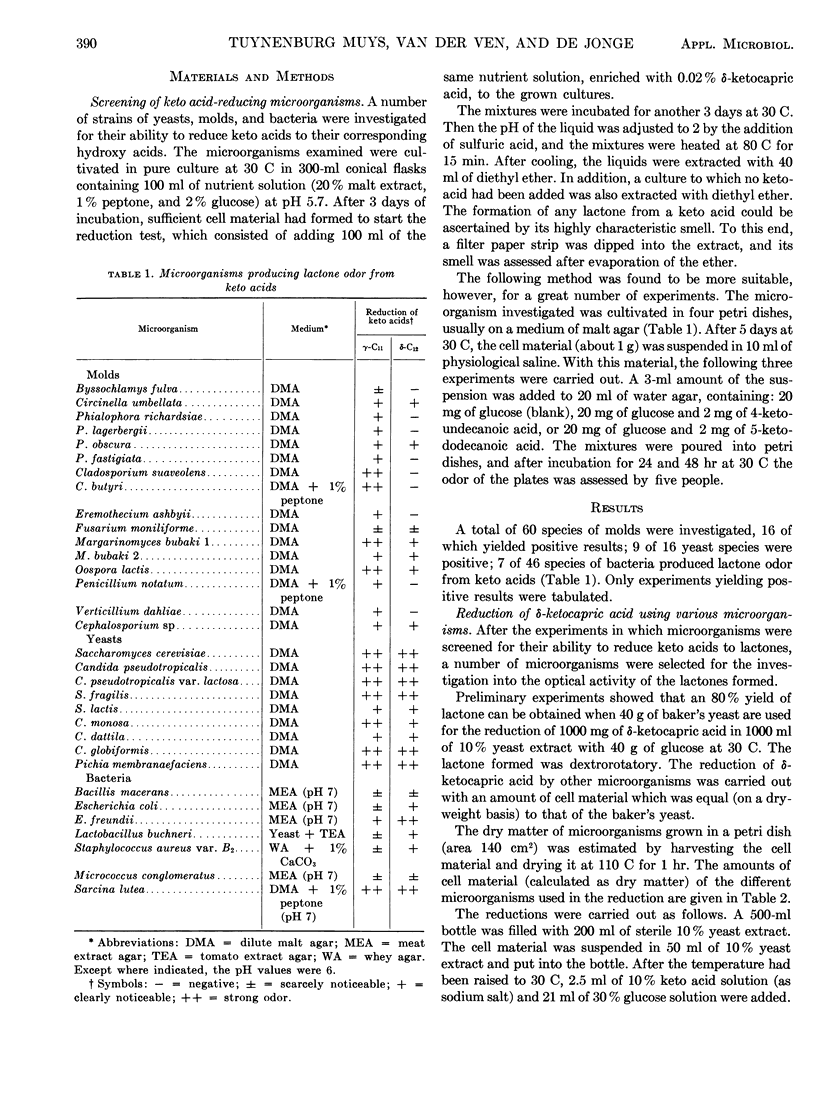Abstract
It was found, by means of simple screening methods, that several yeasts (Saccharomyces and Candida), molds (Cladosporium), and bacteria (Sarcina) are able to reduce keto acids to hydroxy acids, which are easily converted into lactones. Chemical analysis showed that some of the microorganisms (Saccharomyces and Candida) produce dextrorotatory lactones and others (Cladosporium and Sarcina) produce levorotatory lactones. High yields of dextrorotatory (both γ- and δ-lactones) were obtained by using Saccharomyces cerevisiae. The physical properties of the carefully distilled lactones obtained indicated high purity and high optical purity.
Full text
PDF




Selected References
These references are in PubMed. This may not be the complete list of references from this article.
- BOLDINGH J., TAYLOR R. J. Trace constituents of butterfat. Nature. 1962 Jun 9;194:909–913. doi: 10.1038/194909a0. [DOI] [PubMed] [Google Scholar]
- FRANCKE A. Enzymatic reduction of delta-keto acids to the corresponding optically active hydroxy acids. Nature. 1963 Jan 26;197:384–385. doi: 10.1038/197384a0. [DOI] [PubMed] [Google Scholar]
- VISCHER E., WETTSTEIN A. Enzymic transformations of steroids by microorganisms. Adv Enzymol Relat Subj Biochem. 1958;20:237–282. doi: 10.1002/9780470122655.ch8. [DOI] [PubMed] [Google Scholar]


